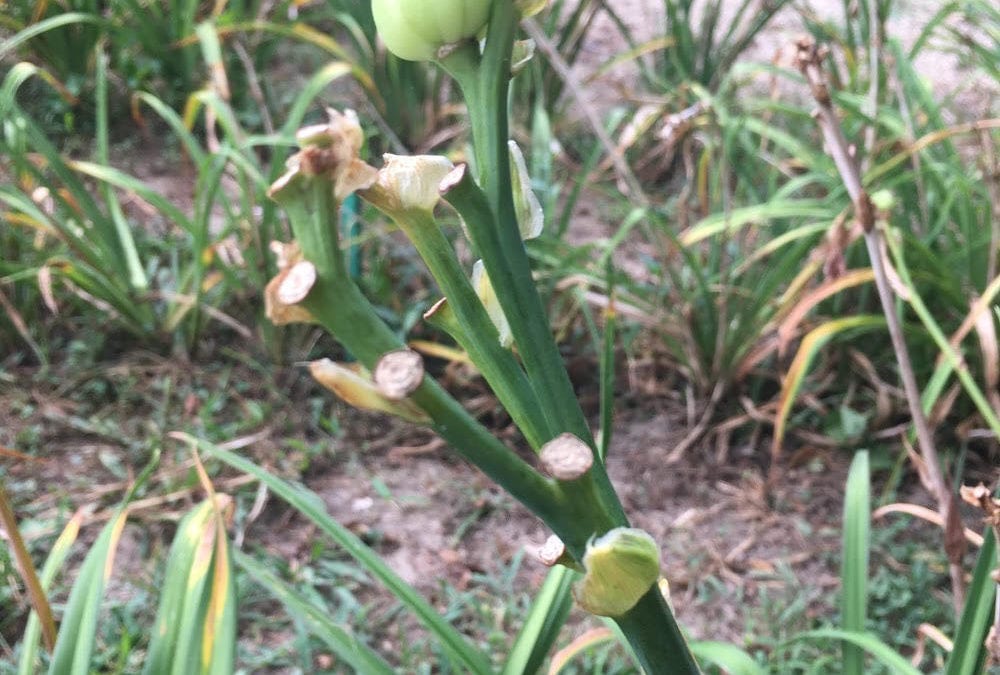The end to blooming season is slowly but surely creeping up on us here at Darby Creek Fields and Flowers. Most daylilies usually bloom from the middle of June to the middle of August. You know that the plant’s blooming period is coming to the end when there are more bloom scars on the scapes then there are blooms. On the scapes, or the stalk of the daylily where the blooms are above the foliage, there may be some seed pods. These somewhat resemble a bloom but come late in the season and have pollinated seeds inside them. Here with our daylilies at Darby Creek Fields and Flowers, we tend to pick off these seed pods when they appear at the end of the season. This is because in the field there are so many different daylilies being cross pollinated with each other. We do not want the cross pollinated daylily seeds being sown and growing into a different plant then the one labeled and identified. As much as we love new and beautiful daylilies, we leave the hybridizing to the professionals. At home, you can either pick off and dispose of these seed pods or if you have all one kind of daylily you may just leave it alone.
The blooms on the daylily plant will be done blooming long before the rest of the plant is done for the season. After the stalk or scape is done blooming and producing seed pods, it will be the first part of the plant to turn brown and die. You can cut these off near the base of the plant with clean scissors or garden shears, or once it is dry enough you can gently pull to remove. We recommend leaving the rest of the foliage of the daylily alone for the rest of the summer through August, September, and October. The daylily is still gathering nutrients and growing; supporting root growth that will be vital for the plant the next year.You can trim back the dead leaves, but try to avoid completely cutting off all the daylily.
This time in the season is also the time to split your daylily. Although the daylilies will not be harmed if you decide to split them at a different time in the year, now is the best time considering the blooms have all stopped yet the plant is still growing.
The greenery or foliage of the daylily does not need to be cut completely down until it all starts turning brown and dying, usually after the first frost in October. Fall is the highly recommended time to clean up the dead foliage. You can then cut or gently pull off all of the dead leaves from the base of the plant to help maintain it. You may also leave the dead foliage over the winter to clean up during early spring. This is also acceptable. As long as you clean up the area before the first new growth appears in the spring, your daylily will be okay. It is recommended to clean up the area to prevent pests and disease from invading and hurting your daylily.
We hope that you have enjoyed your Daylilies this year as much as we have, and we hope to see you soon! Be sure to keep an eye out for more advice and news from DCFF and happy Gardening!


